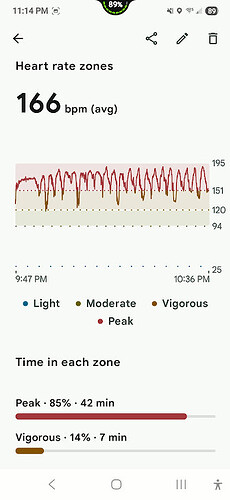There is no shortage of research pointing to benefits of greater than 0.54g/lb = 1.19g/kg, among exercising individuals. For example, The International Society of Sports Nutrition’s Position is summarized at International Society of Sports Nutrition Position Stand: protein and exercise | Journal of the International Society of Sports Nutrition | Full Text and quoted below:
The International Society of Sports Nutrition (ISSN) provides an objective and critical review related to the intake of protein for healthy, exercising individuals. Based on the current available literature, the position of the Society is as follows:
…
2 .For building muscle mass and for maintaining muscle mass through a positive muscle protein balance, an overall daily protein intake in the range of 1.4–2.0 g protein/kg body weight/day (g/kg/d) is sufficient for most exercising individuals, a value that falls in line within the Acceptable Macronutrient Distribution Range published by the Institute of Medicine for protein.
3.There is novel evidence that suggests higher protein intakes (>3.0 g/kg/d) may have positive effects on body composition in resistance-trained individuals (i.e., promote loss of fat mass).
The review below found benefits were notably higher than above among lean athletes – https://paulogentil.com/pdf/A%20Systematic%20Review%20of%20Dietary%20Protein%20During%20Caloric%20Restriction%20in%20Resistance%20Trained%20Lean%20Athletes%20-%20A%20Case%20for%20Higher%20Intakes.pdf is below.
When analyzing the six studies reviewed to determine protein intake per kilogram of FFM, it appears that the range of 2.3–3.1g/kg of FFM is the most consistently protective intake against losses of lean tissue. Furthermore, the goal of the athlete should be taken into account. Athletes with a lower body fat percentage, or a primary goal of maintaining maximal FFM should aim toward the higher end of this range
I regularly listen to the Huberman Lab podcast. It’s hosted by a professor at the Stanford School of Medicine who talks with different guests about nutrition, athletics, health and other topics each week. Most of those guests are research based leaders in their field, such as professors at other universities or trainers with advanced degrees. The most common recommendation of these guests is 1g/lb body weight protein. A minority recommend closer to 0.8/lb or have a variety of qualifiers with different ranges, such as depends on type of protein, type of activities, % body fat, goals, positive/negative calorie balance, meal timing/size, … I can only recall one guest whose recommended as low as the 0.54g/lb, and there was a lot of discussion about why his recommendation was so much lower than other nutrition/athletic experts. As I recall, he was focusing on protein excretion type studies in non-athletes, similar to RDA. He was also a strong proponent of health benefits of a vegetarian diet, which can make higher protein targets challenging.
I personally think 1g/lb is a common recommendations because it is a safe range, regardless of what combination of additional factors are present. For example, it’s more optimal to consider protein recommendations in terms of fat free mass than overall body weight, meaning lower body fat % is associated with higher protein per overall body weight requirements. It also depends on what type of activities you are doing. Weight training and other athletics is associated with an increased protein requirement. It also depends on calorie balance and goals. If you are trying to maintain lean body while in a calorie deficit, optimal protein per lb FFM may be especially high. It also depends on the type of protein. I could continue. 1g/lb is fine for nearly any combination of above factors. The 0.54g/lb recommendation is probably also fine for most persons, but it becomes more important to consider what combination of factors associated with benefits from an increased protein intake are present.



